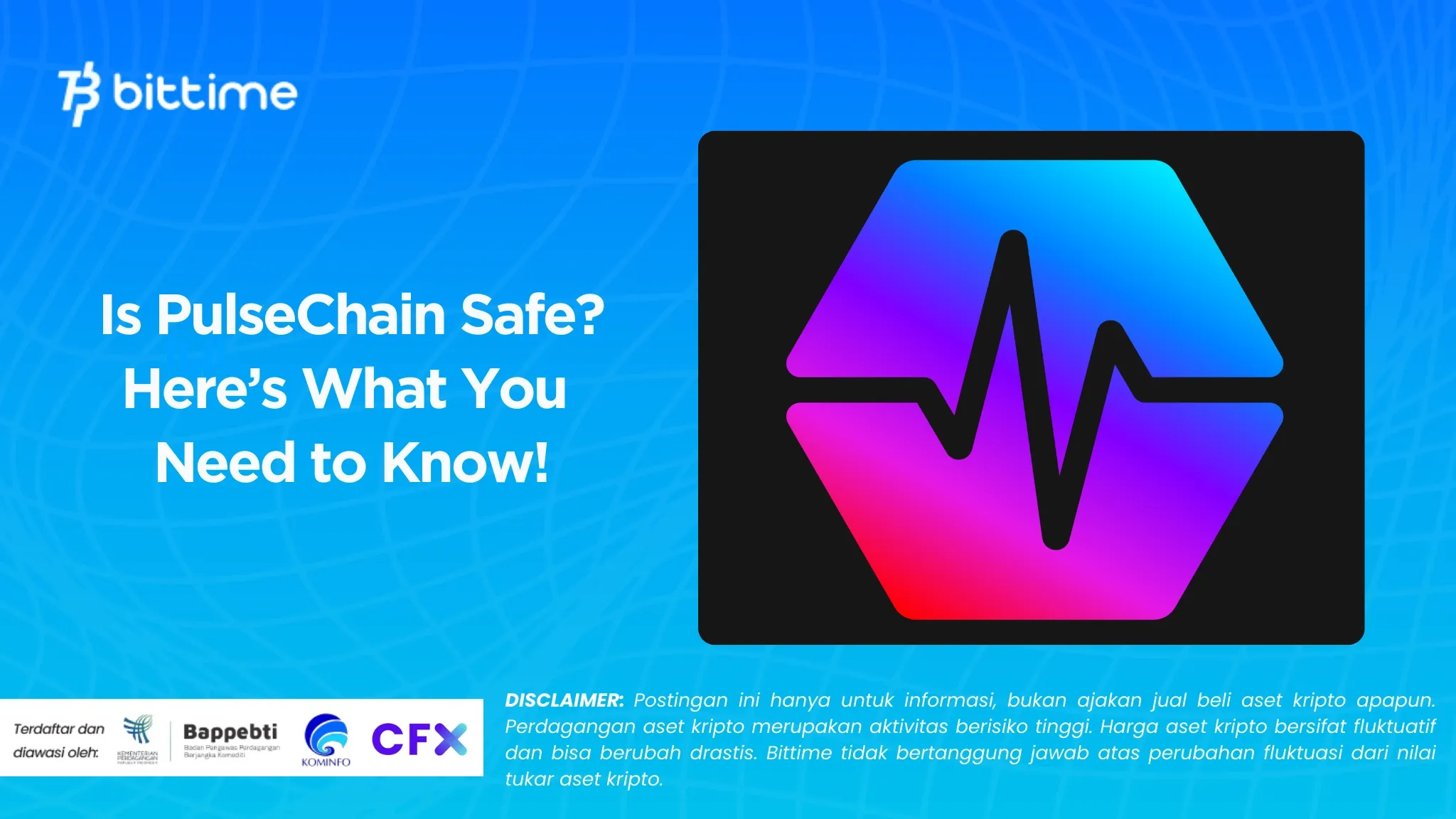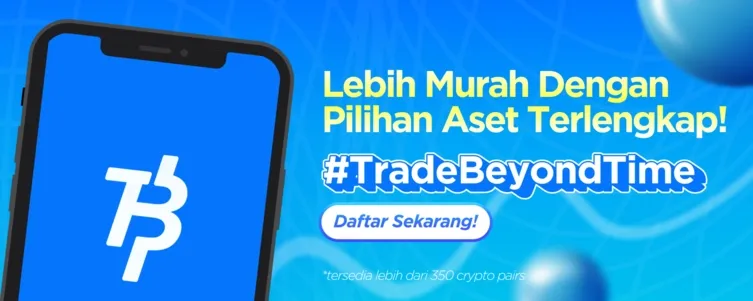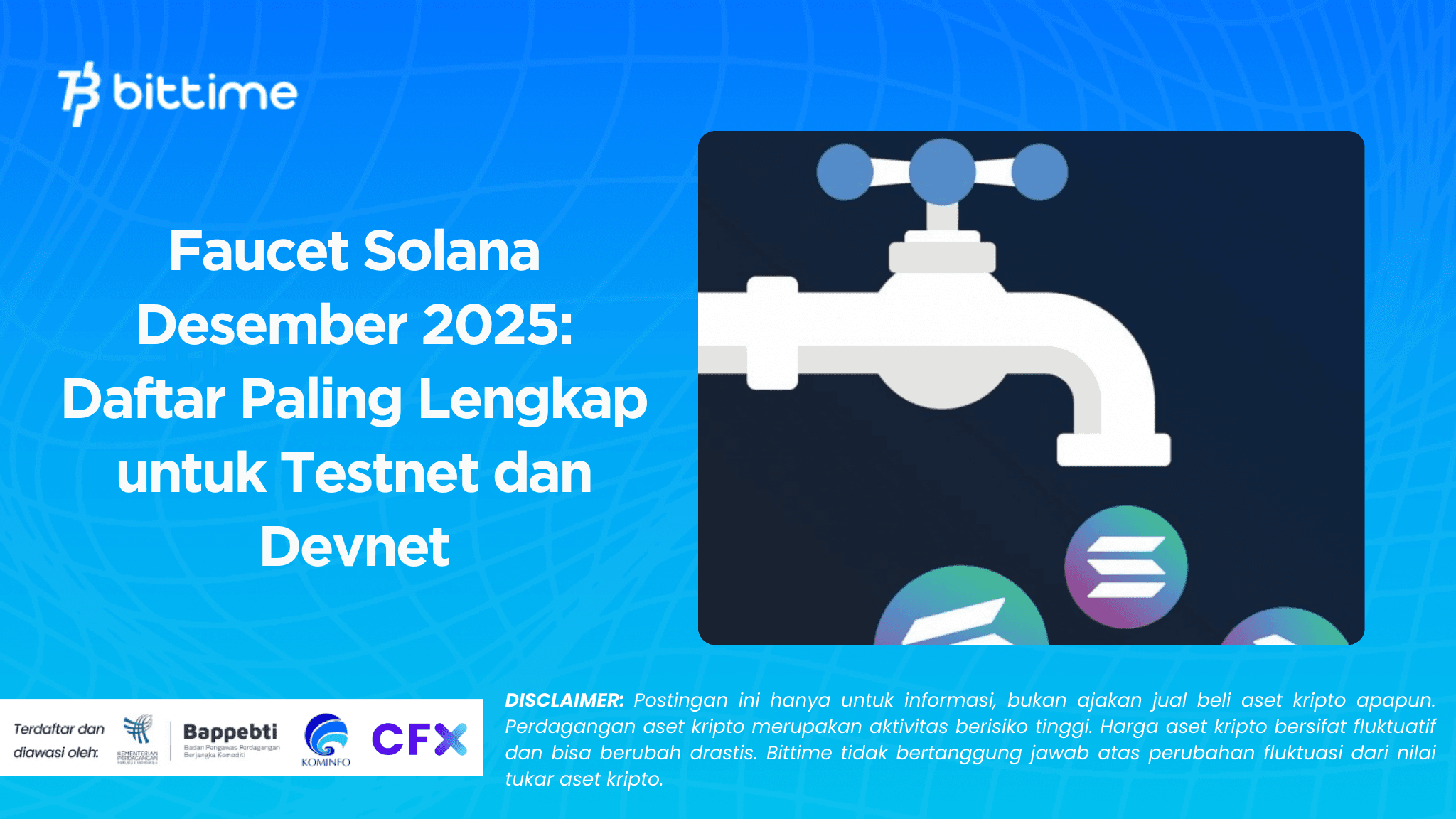Is PulseChain Safe? Here’s What You Need to Know!
2025-03-24
Bittime - PulseChain (PLS) is attracting attention as an alternative to Ethereum because it offers lower transaction fees and faster speeds.
However, aIs PulseChain safe? This article will discuss security PulseChain, starting from the security mechanisms used to protect users from cyber threats.
What is PulseChain (PLS)?
PulseChain (PLS) is a Layer 1 blockchain that is a fork of Ethereum, which aims to address Ethereum's scalability issues by offering faster transactions and lower fees.
As a result of forking Ethereum, this project still relies on Ethereum's strong code base, providing advantages in terms of security and stability.
One of the superior features PulseChain is fee-burn mechanism, i.e. a portion of transaction fees is burned to reduce the number of tokens in circulation. This creates a deflationary effect, which can increase the value of the token in the long term.
Additionally, this project use delegated proof-of-stake (DPoS) as a consensus mechanism, replacing more energy-intensive proof-of-work systems.
Read Also: What is PulseChain (PLS): Its Functions, Tokenomics and Founders!
Is PulseChain Safe?
As a new blockchain project, many are asking whether PulseChain safe for investment? Here are some of the main factors that contribute to security PulseChain (PLS).
1. Based on Strong Ethereum Code
Because PulseChain is a fork of Ethereum, this project adopts the Ethereum security system which has been proven to be strong and reliable.
Meanwhile, Ethereum has gone through various security tests and improvements over the years, so PulseChain inherited that reliability.
Read Also: What is AIDOGE? Check out the explanation here
2. Security Audit by Third Party
PulseChain has undergone a security audit from a third party to ensure there are no loopholes that could be exploited by hackers.
This audit is important because it can identify potential weaknesses in the system before they can be exploited by irresponsible parties.
Read Also: What is SWFTCoin (SWFTC)? Functions and How to Buy $SWFTC Tokens!
3. Mekanisme Delegated Proof-of-Stake (DPoS)
In contrast to Ethereum before The Merge which still used proof-of-work, PulseChain apply immediately delegated proof-of-stake (DPoS).
In this system, only nodes that have the largest number of staking tokens can become transaction validators. This makes the network safer because cyberattacks become more expensive and difficult to carry out.
In addition, validators who violate the rules or attempt to commit malicious acts may be subject to penalties in the form of token slashing. So, validators will be given incentives to continue carrying out their duties honestly and safely.
Read Also: What is OTC Crypto Trading and How Does It Work?
4. Protection against Cyber Attacks
PulseChain has features rate limitation to prevent DDoS attacks and transaction spam. By limiting the number of transactions that can be sent in a certain time, this project can reduce the risk of network overload due to mass attacks.
Apart from that, the fee-burn mechanism also helps reduce transaction spam. Because each transaction has a fee burned, it costs more to disrupt the network by sending a large number of transactions.
Conclusion
PulseChain offers an attractive solution to Ethereum's scalability problem with lower fees and faster transactions.
From a security perspective, PulseChain has a strong foundation thanks to Ethereum code, third-party security audits, and DPoS mechanisms that make the network more resistant to attacks.
So, Is PulseChain safe? Technically, PulseChain has a good level of security, but like other crypto investments, there is always an element of risk that must be taken into account so you still have to be careful, OK!
Read Also: What is Cyber? Get to know the Ethereum Layer 2 Restaked Platform
PulseChain (PLS) FAQs
What is PulseChain (PLS)?
PulseChain is a Layer 1 blockchain that aims to improve the efficiency and scalability of the Ethereum network. PLS is the native token of the network PulseChain which is used to pay transaction fees.
When is PulseChain (PLS) Launching?
PulseChain launched on May 13, 2023 and has since experienced significant community growth and adoption by various projects and users.
How to Buy PulseChain (PLS)?
Users can buy $PLS tokens on PulseX or CEX that supports Pulsechain. Make sure to use a compatible wallet and add the network PulseChain.
How to Buy Crypto with Bittime
Want to trade sell buy Bitcoins and crypto investment easily? Bittime is here to help! As an Indonesian crypto exchange officially registered with Bappebti, Bittime ensures every transaction is safe and fast.
Start with registration and identity verification, then make a minimum deposit of IDR 10,000. After that, you can immediately buy your favorite digital assets!
Check the exchange rate BTC to IDR, ETH to IDR, SOL to IDR and other crypto assets to find out today's crypto market trends in real-time on Bittime.
Additionally, visit Bittime Blog to get various interesting updates and educational information about the world of crypto. Find trusted articles about Web3, blockchain technology, and digital asset investment tips designed to enrich your knowledge in the world of crypto.
Reference
Crypto Geek, What Is Pulsechain & How To Buy It?, accessed March 24, 2025.
Author: IPR
Disclaimer: The views expressed belong exclusively to the author and do not reflect the views of this platform. This platform and its affiliates disclaim any responsibility for the accuracy or suitability of the information provided. It is for informational purposes only and not intended as financial or investment advice.





